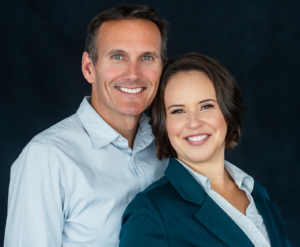Habit #3: Understand Your Negative Communication Patterns
First things first, we want to specify that the Habits #1, #2, and #3 are absolutely PIVOTAL for a long-lasting and satisfying relationship. At the same time, they are the most complex to make progress without additional support. We expect that if you have serious troubles in these areas, you will need more help than reading these blogs or even our book. You will likely need to take one of the course options that we have for couples, in order to have some help to be guided in your conversations as a couple and learn the skills you need together in a more thorough process.
First, notice that this Habit is not “learn how to communicate, so you don’t fight”. Not fighting is not realistic. Part of the overused relationship concept of ‘communicate better’ is simply not ignoring things! It’s critical to agree to bring up the difficult topics first. And if you bring up difficult topics, emotions will sometimes run high, and you will fight. There’s no way to get around that. Some research studies show what makes people stick together, in the long run, is not how often they fight; it’s HOW they fight. And more importantly, how they REPAIR – which we cover in Habit #2.
According to world-renowned therapist and psychology researcher Sue Johnson, there are 3 main patterns that couples get into when they get emotionally triggered (which we’ll call fighting or arguing):
- Attack-Attack,
- Demand-Defend (or Pursue-Withdraw), and
- Withdraw-Withdraw.
It’s important that couples understand their own pattern and the steps each partner takes within their “fight” pattern and try to understand what’s behind their step or part.
Something triggers us when we argue, and unfortunately in those moments, all our partner sees is our reaction. It’s hard for them to see the underlying and softer feeling or the fear that triggered the reaction in the first place. This can loop us into a spiral of attack-attack where partners go head to head.
Alternatively, one could be pushing and the other defending in the demand-defend cycle. Or both partners could just pull away from each other and go into the withdraw-withdraw cycle, trying desperately to avoid any conflict.
These patterns or cycles only lead to more pain because nothing gets resolved. Sometimes in the attack-attack or demand-defend cycles, things escalate to higher levels of anger, screaming, and even ‘contempt’. When things get heated sometimes, couples start belittling and demeaning their partner in an attempt to try to ‘win’ the fight, or regain a sense of control. This is BAD! Another important researcher, John Gottman, has found that the #1 predictor of divorce is when contempt is present in couples’ arguments.
Tips on How to Understand Your Negative Communication Patterns
If you want to hurt each other less through your fights, you must first understand how you fight. Reflect on how you react when you feel upset, hurt or disconnected from your partner. Think of how your partner actually receives your reaction. Is there another way you can come in to express yourself instead of taking that typical action step?
Understanding how you fight takes practice, but nothing will change unless you both talk about your cycle together and agree to stop the fight and take a breather as soon as one of you notices that you are caught in your cycle. It’s like waving a ‘white flag’ at your partner, saying: “Hey, we are caught in this thing we do again, and this won’t get us anywhere”. Some couples even have a funny code word they use to diffuse the fight to help them remember that they are not enemies – they are on the same team trying to break through their cycle.
Remember that if you want to change the “argument” cycle you have with your partner, you have to focus on your own end of the cycle – the step YOU take – because you can’t change your partner. The magic happens when you both focus on your own step and work on changing it.
Last thing. Don’t beat yourself up if this is too hard to do alone. The longer this negative communication cycle has been around and the deeper it is entrenched in your relationship, the more difficult it can be to change it. It can be even more difficult if you have challenges in many of the other areas we discussed in this article or if your trust in your partner or the relationship has been impacted.
Don’t hesitate to get help if you need it. Don’t wait for the cycle to take a stronger hold on you.








